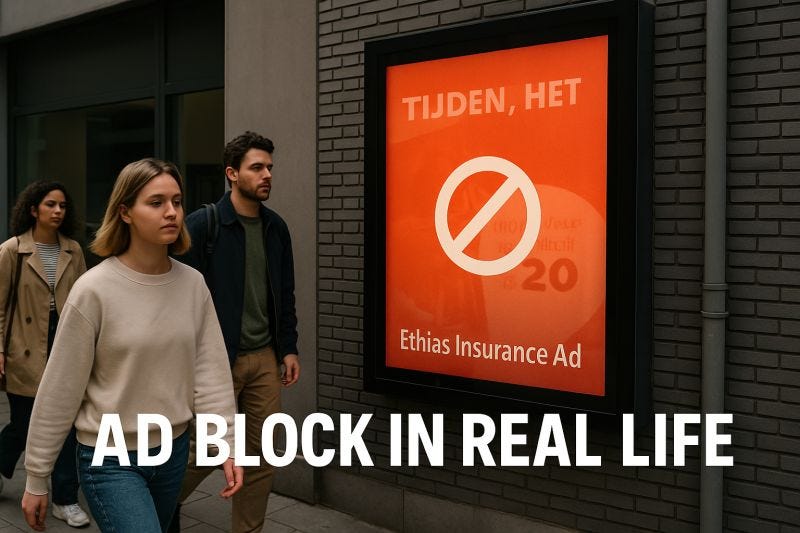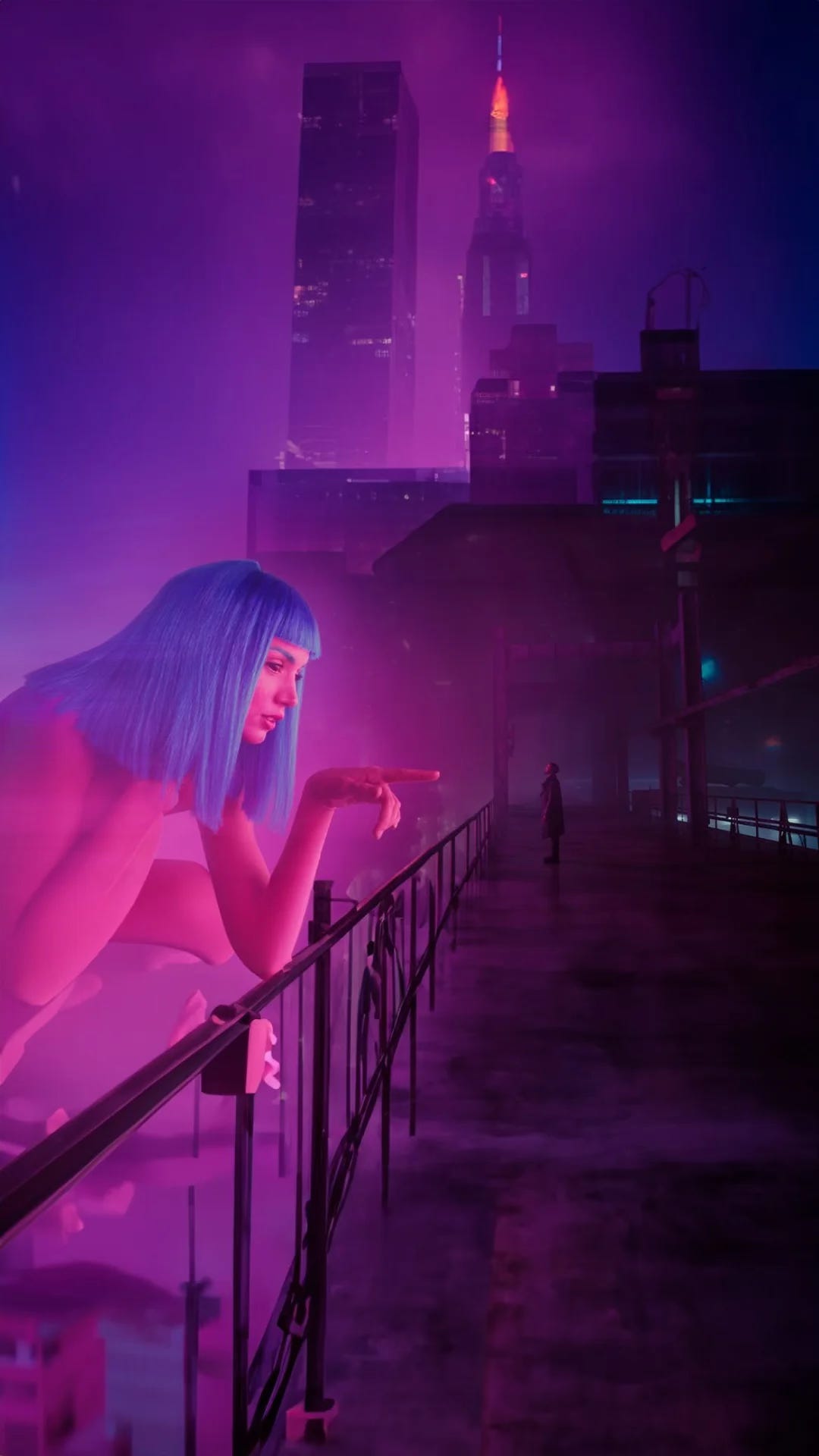by Nick Coston, posted June 26th, 10:00pm EST
Sometimes the best weekly rambles aren’t my own. Sometimes a simple LinkedIn post makes more noise. This post by Julio Chamizo of Taggify, a well-known programmatic out-of-home platform in LATAM that came out 2 days ago, does just that.
An ad blocker for the real world? Does it really exist? Well, in the AI world it does. As you read Julio’s post, please make sure you see the accompanying video below.
Developed by a Belgian based Ai engineer Stijn Spanhove, this is something out of “Blade Runner 3”. As Business Bulls Insta page explained “Using Snap’s 5th-gen AR Spectacles and Google’s Gemini AI, his experimental app scans the surroundings and blocks out real-world ads, billboards, and logos by replacing them with red boxes and tagging the brand names. Inspired by “They Live”, this project offers a glimpse into a world where you control what you see in public.
Though still early in development, Spanhove hints at future updates where users can replace ads with personal images or reminders—raising big questions about visual freedom, digital boundaries, and the future of outdoor advertising.”
By now you know that I’m a huge fan of all things OOH/DOOH. But is there a chance we are becoming over-saturated with digital signage, simply by walking down the street? Are we overwhelmed by the 10 second ad flips store after store, many of which we may not be paying attention to? Might our current surroundings make this a thing? When we see multiple place based-companies with screens next to each other in the same storefront, is that overkill on our brains? What would our world be like if we could seriously control what we see in public? Would this really be something a person/consumer in the real would want, and if so what would it do to the OOH industry as we know it today?
The ramifications of such an ad-blocker are huge in fact they are industry altering. How would such a tech impact CPM’s, rates, dwell times? It would throw the whole system out of whack if this project becomes a reality. Even in one market.
I’m not saying I’m for it or not for it, but someone, somewhere will develop this tech. Would you partake? Would you pay, let’s say $150 per month NOT to see OOH ads as you move around a city? $500? What’s it worth to you?
Frightening possibilities from a multiple of perspectives.
“Blade Runner 3” my friends. The film just wrote itself.
Here’s Julio’s post from two days ago:
“🚫 When someone builds an ad blocker for the real world… it’s time to ask deeper questions.
I recently came across a video where an AI engineer created an app that blocks ads in real life.
Yes — like an AdBlock for the streets. Through a phone or smart glasses, the app detects billboards and replaces them with a blank screen or a warning sign.
Funny? Maybe.
Revealing? Definitely.
The Video: https://lnkd.in/dGrie26K
🌍 Why I care
I’ve dedicated my career to building solutions in the Programmatic Digital Out-of-Home (pDOOH) space.
Because I believe cities speak — and advertising can be part of that dialogue in meaningful, creative, even beautiful ways.
But I also believe in listening.
And when someone builds a tool to erase our work from public view, we shouldn’t dismiss it.
We should reflect.
🤯 Are we oversaturating public spaces?
We once admired the power of iconic billboards, creative takeovers, and clever city campaigns.
But lately, much of what we see feels repetitive, templated, forgettable.
If audiences are actively trying to “opt out” of our messages… maybe it’s not them. Maybe it’s us.
When did we trade creativity for convenience?
Programmatic buying, dynamic content, geotargeting — we’ve added powerful tools to our DOOH toolbox.
But have we lost sight of why people stop and look in the first place?
Where is the boldness?
The local flavor?
The emotional spark?
💥 What if we aimed higher?
This “real-life ad blocker” could be seen as a threat.
But what if it’s an invitation?
An invitation to:
• Design ads people don’t want to block.
• Craft campaigns that add to the city instead of blending into noise.
• Rethink metrics — not just impressions, but impact.
🔄 Let’s talk
• Are people tired of advertising — or just tired of uninspired ads?
• What’s the last outdoor campaign that made you stop and think?
• How do we balance automation with storytelling in DOOH?
• And how can we reimagine this medium — not just as a screen, but as a canvas?
I believe DOOH has the potential to be the most powerful storytelling format in the urban landscape.
But we can’t take attention for granted. We have to earn it — again and again.
Let’s make it worth watching.”








This is extremely important and very insightful. I hope this generates meaningful discussion. Thanks for sharing this!